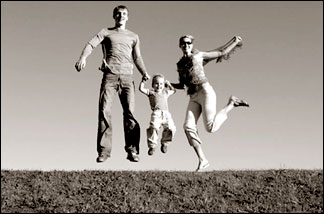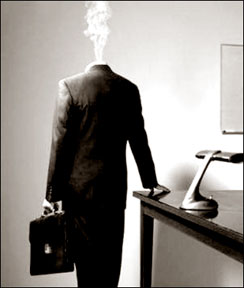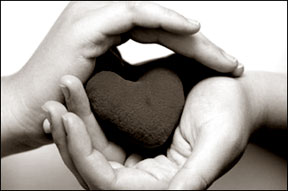|

Active living athlete, heal thyself
It’s vital to seek immediate medical attention if a sports-related
injury involves severe pain and swelling, numbness, or inability to move
the limb or joint. But for mild sprains, strains, bumps, or bruises,
follow the RICE program: *Rest: Take a break for a day or two to let the
injured area rest and recover.
 Your body needs time to heal the injury. Once you can go about your
usual daily routine without pain, you can ease yourself back into a full
slate of activities. Your body needs time to heal the injury. Once you can go about your
usual daily routine without pain, you can ease yourself back into a full
slate of activities.
* Ice: Apply an icepack (or a bag of frozen vegetables, wrapped in a
towel) to the injured area for 15- 20 minutes every few hours. Ice helps
to cut down on swelling and inflammation by slowing blood flow to the
injury, as well as lessening the pain by numbing it a bit.
* Compression: Between ice treatments, wrap an elastic bandage around
the affected part to apply pressure and reduce swelling. Compression can
also help provide support to a weak joint. It should be fairly tight,
but make sure it doesn’t press on nerves or cut off blood circulation -
if the end of the limb turns blue, that’s too tight! It’s also too tight
if you feel throbbing in the bandaged area. For the same reason, don’t
wear the bandage at night.
* Elevation: Let gravity do the work - try to keep the injured limb
raised above the level of the heart to prevent fluids from pooling in
the inflamed tissues. For an injured leg, prop it up above the hips when
lying down. Injured arms can be held up in a sling.
In addition, you can lessen inflammation and relieve pain by taking
ASA, ibuprofen, naproxen, or other anti-inflammatory drugs. Check with
your doctor or pharmacist first before taking any medications, and take
care not to exceed the recommended doses. If, after following these
steps, the injury doesn’t seem to be getting any better within 48 hours,
it’s best to see your doctor.
Living with arthritis means learning how to manage the symptoms,
maximize mobility, and, for some types of arthritis, slowing down the
progression of the disease with medications.
Don’t let arthritis keep you down
First, see your doctor if you haven’t already. Pain medications can
make it easier for you to move around, and can relieve the stiffness in
the joints. It’s important not to get discouraged if the medications
don’t seem to be working right away.
What helps one person may not help another; you may need to try
different medications at various dosages before you find adequate
relief. Certain medications may take several weeks to reach their full
effect.
It’s understandable to feel frustrated or down when you can’t do
things you once could - whether it’s taking long hikes in the woods or
doing fine needlework. But to stay healthy in body, mind and spirit, you
may have to make some adjustments. If you loved to walk long distances,
continue to take walks, but walk shorter routes around your
neighbourhood or take part in a “mall walk” sponsored by your local
shopping centre.
If it’s getting too difficult to do your favourite hobby, maybe you
can learn a similar one that puts less stress on your joints, or use
adaptive aids to help you continue doing the one you love. Occupational
therapists are a great resource for handy devices that might make it
easier for you to continue enjoying your activities. Exercise! Exercise
helps arthritis by improving joint movement and strengthening the
muscles that surround the joints.
Although you should avoid forms of exercise that increase joint pain,
other forms of exercise such as swimming and walking are recommended.
Swimming is particularly good for people with arthritis.
The water helps support the weight of your body, taking the strain
off of the joints. Call your local community centre to see what special
exercise activities they have to offer. Check with your doctor or
physiotherapist before starting a new exercise program.
Staying active, physically and mentally, is important to maintain
good health. For example, participating regularly in swimming and
exercise programs can help you get out of the house and maintain social
contacts. Ask your doctor or physiotherapist for ideas.
Know your knees
Your knee: It’s the biggest joint in your body, made up of a lot of
parts that can get injured in all kinds of sports. The knee connects the
lower end of the thighbone (femur) to the upper end of the shinbone
(tibia). Several large ligaments - strong, elastic bands of tissue that
join bone to bone - make this connection, bracing and controlling the
motion of the joint.
The kneecap (patella) slides in a groove at the end of the thighbone;
it protects the knee and gives leverage to various leg muscles.
Cartilage at the ends of the leg bones helps to cushion the joint, like
a shock absorber.
Sprains - stretched or torn ligaments - are an especially common knee
injury; the anterior cruciate ligament (ACL) is the one most often
damaged. This can happen, for example, when you change direction
quickly, twist a leg or fall, slow down when running, or land from a
jump.
Typically, a torn ACL will be immediately disabling: you’ll feel or
hear a “pop,” and the knee seems to “give way.” Even though it might not
be painful, see a doctor right away. Surgery may be necessary.
Knee pain can also come on gradually from overuse of the joint. For
example, “patello-femoral syndrome,” or pain caused by the kneecap being
pushed against the sides of its groove, can occur if you do a lot of
running.
The pain, either sharp or dull, is usually felt in the front of the
knee. Squatting or walking down stairs often makes it worse, and you
might feel a grinding or “clicking” in the joint.
A sports medicine specialist can help you to rebalance the kneecap
and prevent further pain through proper training, stretching, and
strengthening exercises.
Stress-busting tips
Most of us feel pressured by the demands of daily life. But sometimes
too much stress can make you sick. Reducing stress can help improve your
overall health and energy. Find out how to simplify your life, get
support, and use relaxation techniques to fight stress.
 Stress is a health problem in itself, but it can also lead to other
physical and emotional complications. Stress is a health problem in itself, but it can also lead to other
physical and emotional complications.
Stress can indirectly cause other health problems by affecting your
behaviour.
Signs that you’re under stress may include:
* unhealthy nutrition - you may skip meals, or overeat, or eat too
much of the wrong foods - for instance, sugary and fatty foods
* dependence on other substances - you may drink too much, smoke, or
use medications or street drugs to deal with the stress
* moody behaviour - you may behave in ways that endanger your
physical well-being, from getting into arguments to ignoring traffic
lights
* sleep disturbances - you may not get enough sleep, and lack of
sleep reduces the effectiveness of your immune system and further
affects your judgement
* physical inactivity - you may not be motivated to get enough
exercise Stress also acts directly on your emotional health. Chronic
stress can lead to anxiety or mood disorders.
These can be disabling, can further affect your health, and can even
lead to more serious problems that need hospitalization. And the
awareness of being anxious or “feeling down” can cause further stress.
And stress directly affects your physical health. The natural stress
response is a “fight or flight” situation - as the adrenaline starts
pumping, your heart beats faster, your blood flow and blood pressure go
up, and you breathe faster.
But when you’re sitting at your desk or stuck in traffic, all this
does is increase the wear and tear on your system. You may get headaches
and other aches and pains, nausea, and heart palpitations. In the long
run, it may lead to a heart attack or a stroke.
So if you’re experiencing stress, it’s not just a small problem
affecting your nerves or your behaviour. It can have very important
effects on your health. Be aware of what causes stress for you and watch
for the physical signs of stress - and learn how to deal with it. See
“Stress-busting tips” and “Helping your body beat stress” in this
feature.
Take control of stress with the following tips:
Simplify
* Set priorities for yourself. Organize your time so that you do the
things that are most important to you first. Let less important things
go.
* Identify things that cause you the most stress. Then, look for ways
to get around them. For example, if you find travelling stressful, see
if you can make a phone call instead.
* Concentrate on doing one thing at a time. Once you have finished a
task, take a moment to let yourself feel good about getting it done.
Take a rest if you need it, and then move on.
* If you are running late, or if you feel overwhelmed, cancel or
reschedule your appointments.
* Learn to say “no.” Save your energy for the things that are most
important to you. Get support
* Don’t try to do everything yourself. Ask your friends and family
members to help with some of your responsibilities.
* Talk about your feelings with family and friends. Make sure you
take time for social activities and exercise.
You’ll be more prepared to deal with situations that cause you stress
if you’ve taken time for fun! Plan ahead
* Think about which situations cause you stress. Then, plan ahead to
minimize or avoid these predictable sources of stress.
For example, if waiting in line is stressful for you, bring a book to
help pass the time. If you find the morning rush stressful, get up 15
minutes earlier so that you don’t feel so rushed.
* Schedule breaks for yourself throughout the day.
This will give you a chance to rest, and will also prevent the stress
that comes from getting “behind schedule
Ten simple food choices that can help your heart
 Read how a well-rounded diet full of leafy greens and healthy fats
can help lower your risk for heart disease To have a heart-healthy diet: Read how a well-rounded diet full of leafy greens and healthy fats
can help lower your risk for heart disease To have a heart-healthy diet:
1. Eat fruits and vegetables:
Eat a variety of fruit and vegetable servings every day. Dark green,
deep orange, or yellow fruits and vegetables are especially nutritious.
Examples include spinach, carrots, peaches, and berries.
2. Eat a variety of grain products every day: Include whole-grain
foods that have lots of fibre and nutrients. Examples of whole grains
include oats, whole wheat bread, and brown rice.
3. Eat fish at least 2 times each week: Oily fish, which contain
omega-3 fatty acids, are best for your heart. These fish include tuna,
salmon, mackerel, lake trout, herring, and sardines.
4. Limit saturated fat and cholesterol:
To limit saturated fat and cholesterol, try to choose the following
foods:
Lean meats and meat alternatives like beans or tofu
* Fish, vegetables, beans, and nuts
* Nonfat and low-fat dairy products
* Polyunsaturated or mono-unsaturated fats, like canola and olive
oils, to replace saturated fats, such as butter
5. Read food labels and limit the amount of trans fat you eat: Trans
fat raises the levels of LDL (“bad”) cholesterol and also lowers
high-density lipoprotein, HDL, (or “good”) cholesterol in the blood.
Trans fat is found in many processed foods made with shortening or with
partially hydrogenated or hydrogenated vegetable oils. These foods
include cookies, crackers, chips, and many snack foods.
6. Choose healthy fats: Unsaturated fats, such as olive, canola,
corn, and sunflower oils, are part of a healthy diet. But all fats are
high in calories, so watch your serving sizes.
7. Limit salt (sodium): Limit sodium intake to less than 2,300
milligrams of sodium per day (about one teaspoon). Choose and prepare
foods with little or no salt. Watch for hidden sodium in foods.
8. Eat only as many calories as you need to stay at a healthy weight:
Learn how much is a serving, and then check your portion sizes. Limit
drinks with added sugar and high-fructose corn syrup. If you want to
lose weight, increase your activity level to burn more calories than you
eat.
9. If you drink alcohol, drink in moderation: Limit alcohol intake to
two drinks per day for men and one drink per day for women.
10. Limit added sugar: Limit drinks and foods with added sugar.
When you are eating away from home, try to follow these heart-healthy
diet tips. You can get even more benefit from making diet changes if you
also get some exercise on most, preferably all days of the week and
don’t smoke.
But you don’t have to be perfect, and you don’t have to do it all at
once. Make one or two changes at a time. As soon as you are used to
those, make another one or two changes. Over time, making a number of
small changes can add up and make a big difference in your health. Here
are some ideas about how to get started:
* Choose whole-grain bread instead of white bread.
* Have a piece of fruit instead of a candy bar.
* Try to eat at least 5 servings of fruits and vegetables everyday.
Start by adding one or two servings of fruits and vegetables for your
day. Slowly add more servings until you are eating at least 5 servings a
day.
* Switch from 2% or whole milk to 1% or nonfat milk.
* Instead of meat, have fish for dinner. Brush it with olive oil, and
broil or grill it.
* Switch from butter to a cholesterol-lowering soft spread. Use olive
or canola oil for cooking.
* Use herbs and spices, instead of salt, to add flavour to foods.
It may take some time to get used to new tastes and habits, but don’t
give up. Keep in mind the good things you are doing for your heart and
your overall health.
CNN.com |
